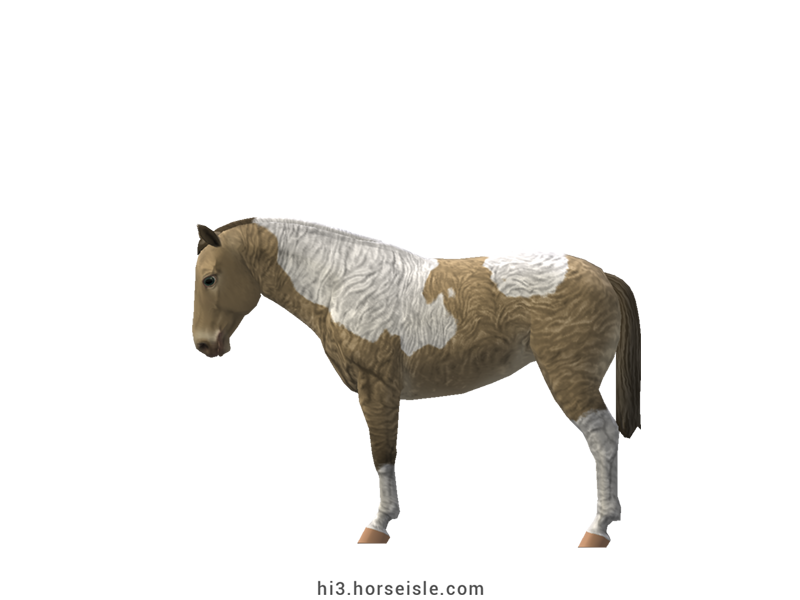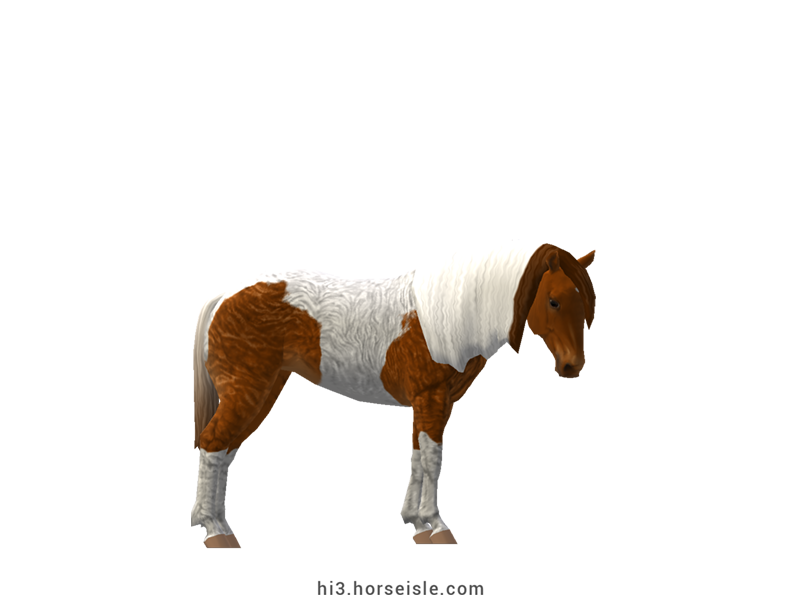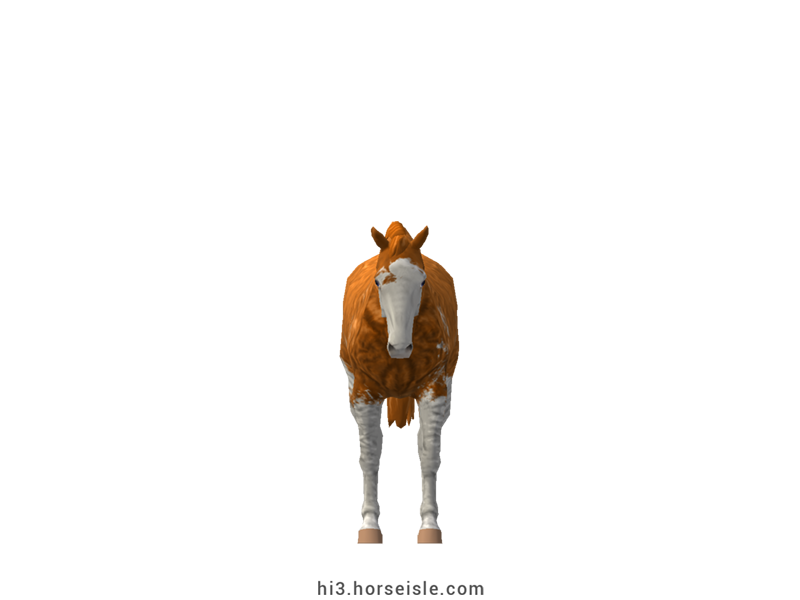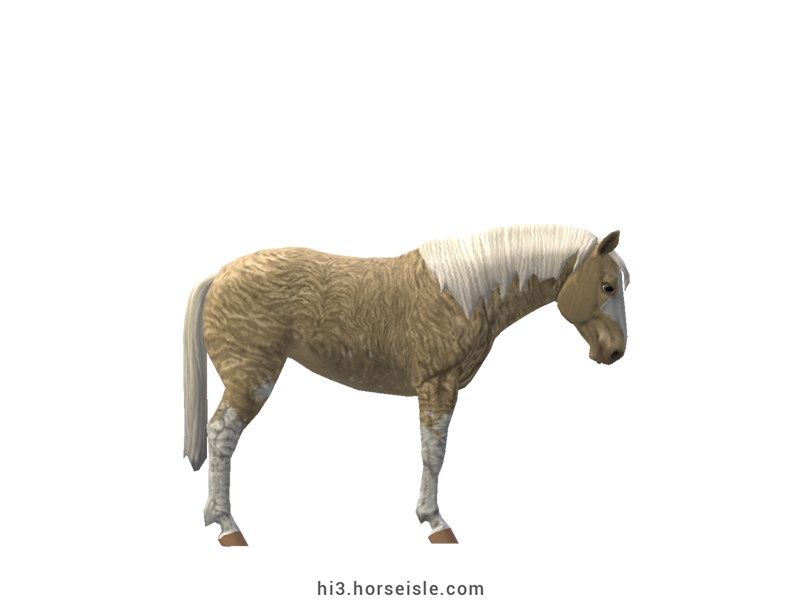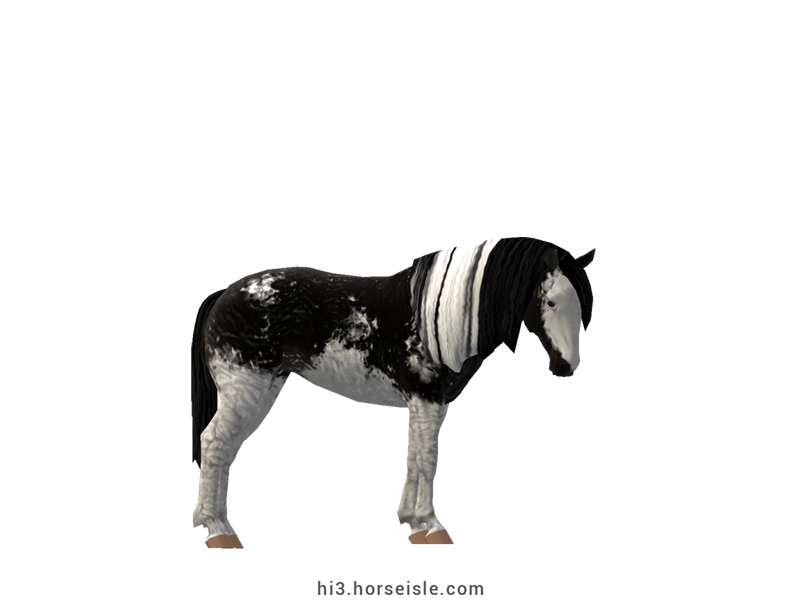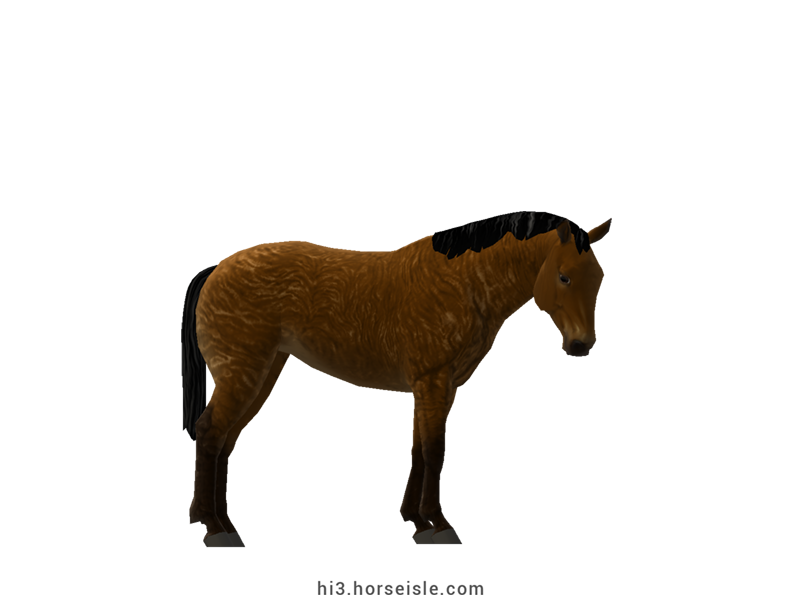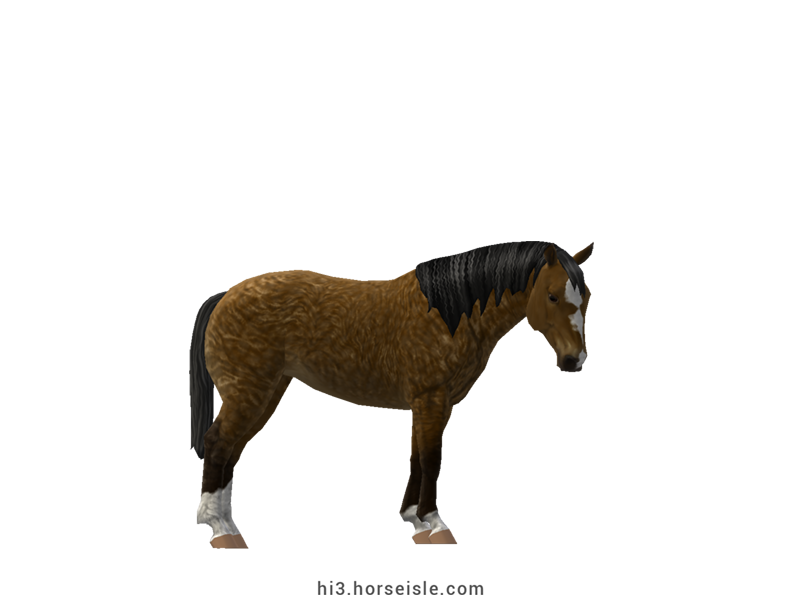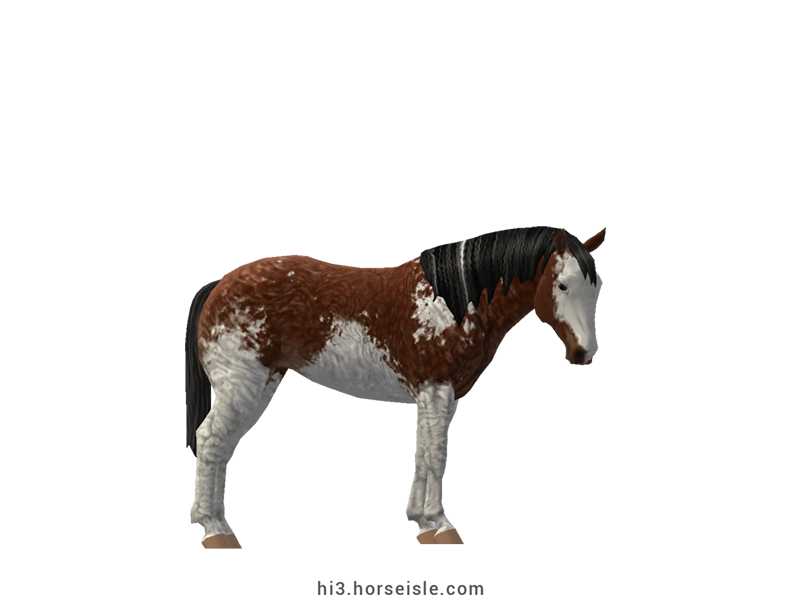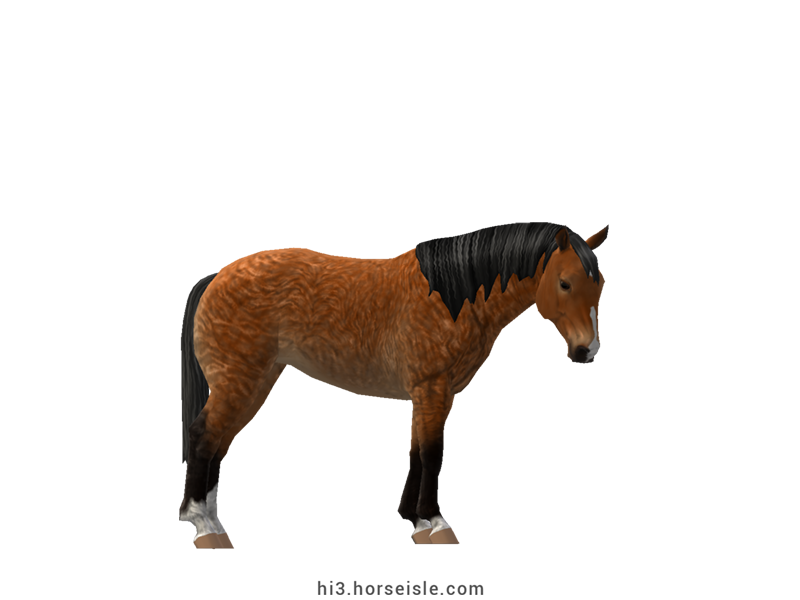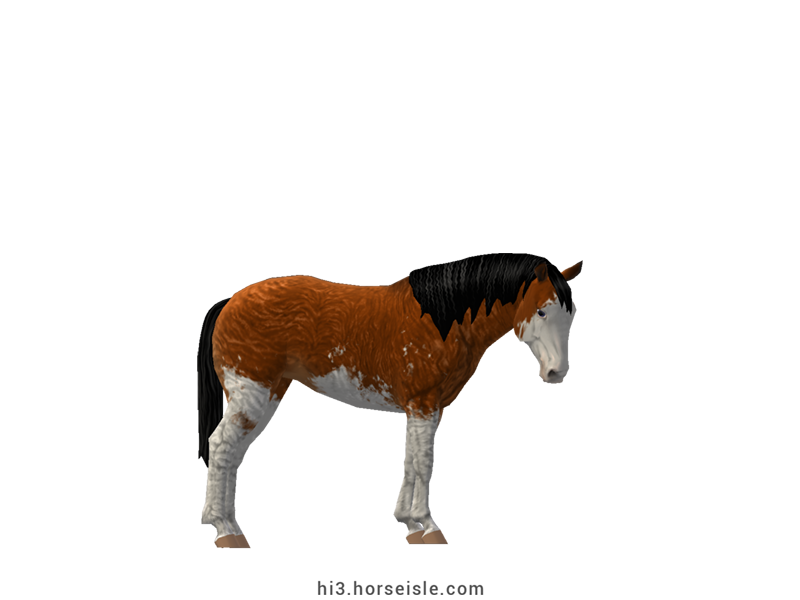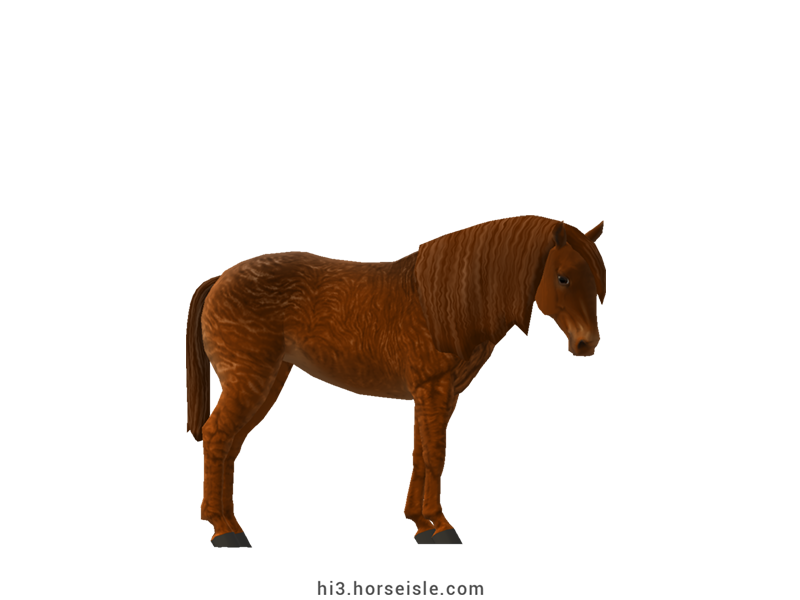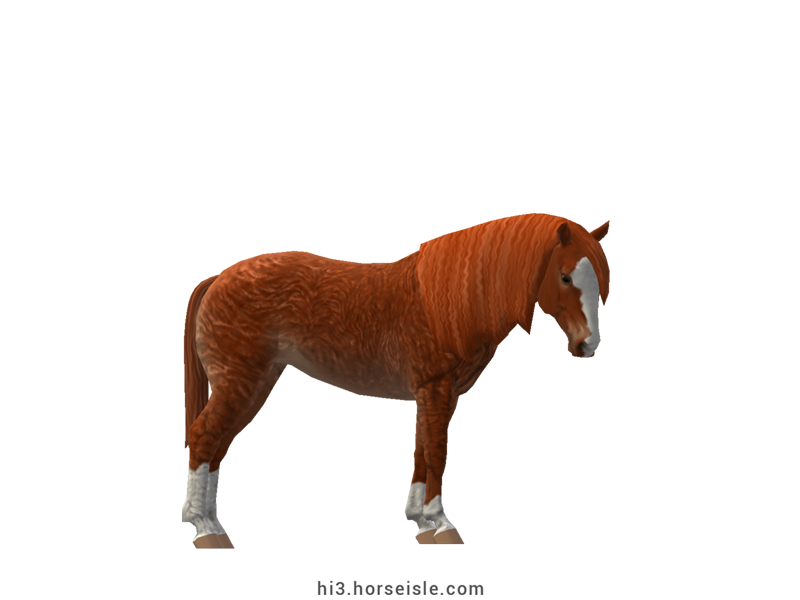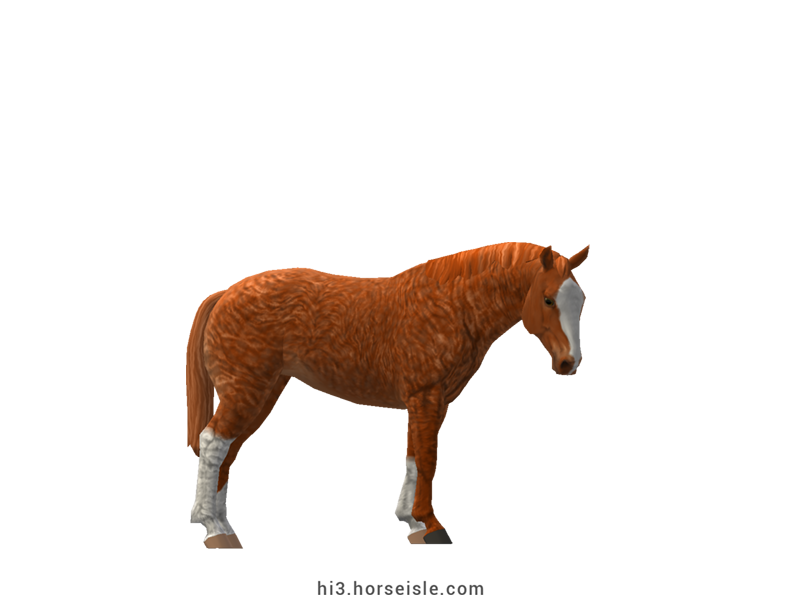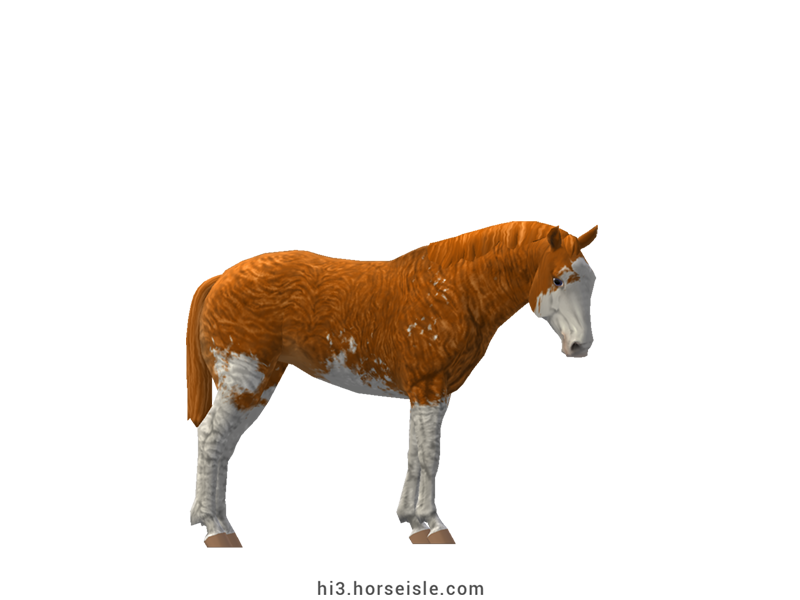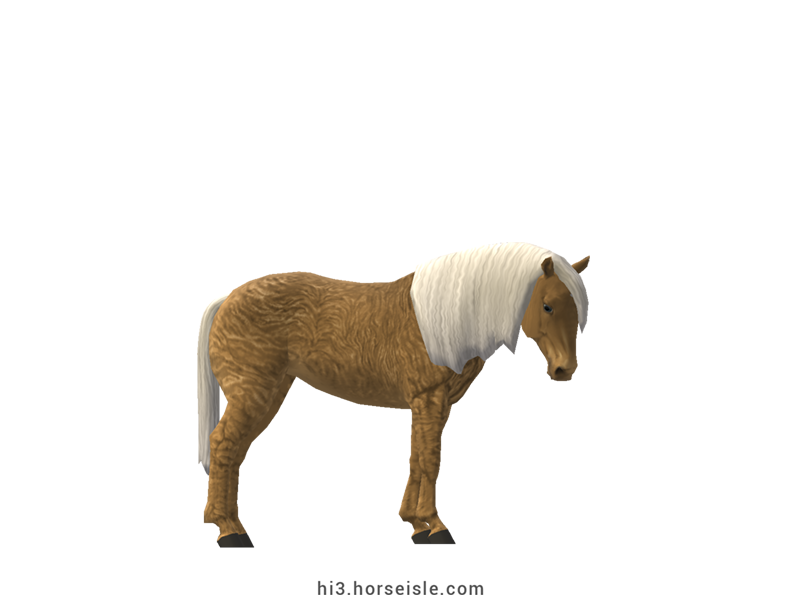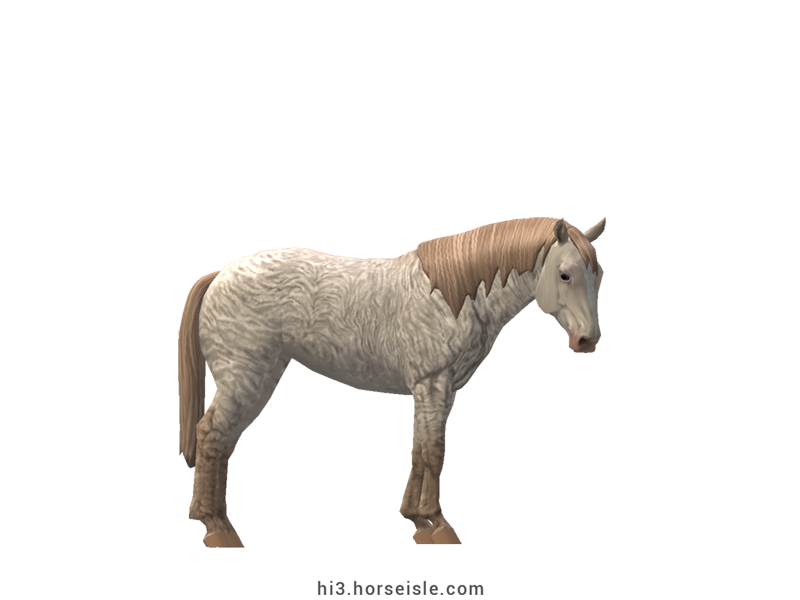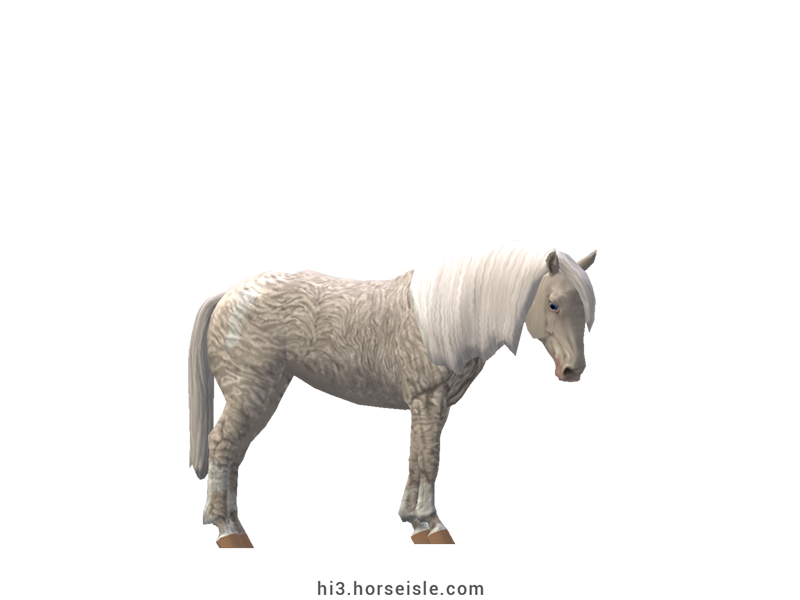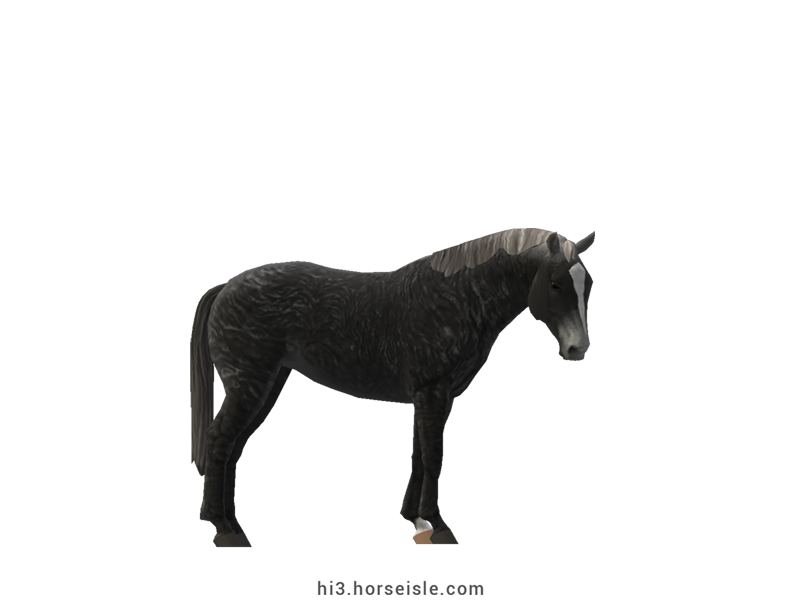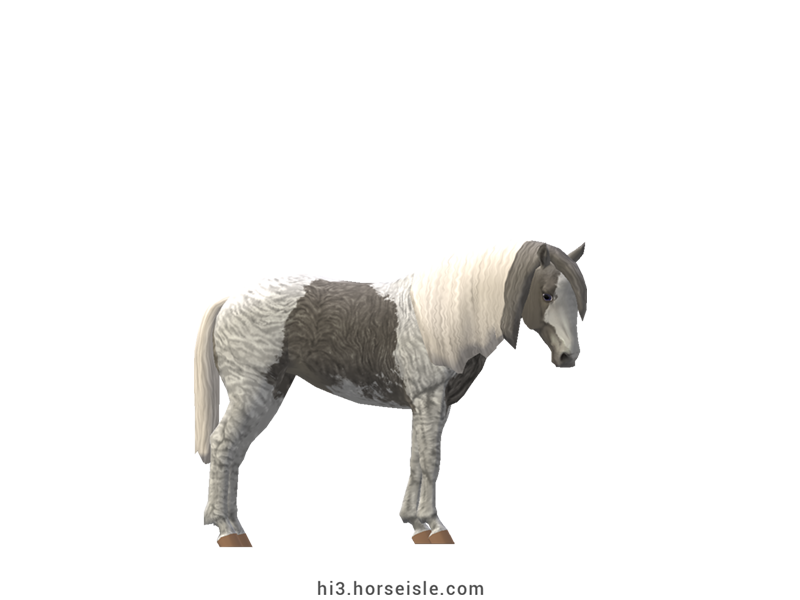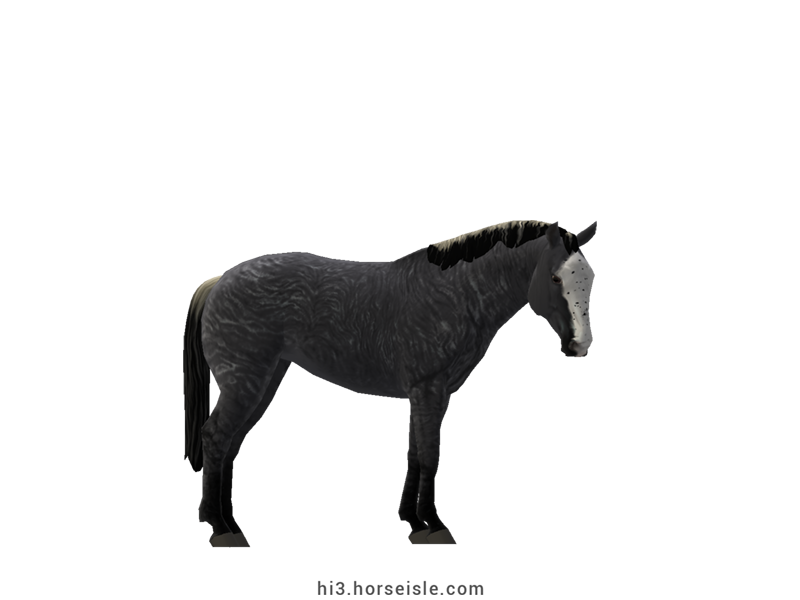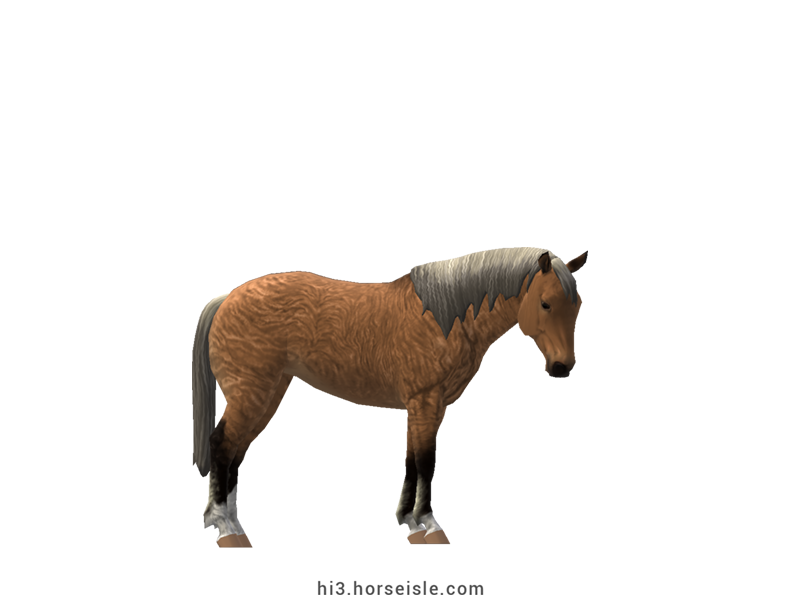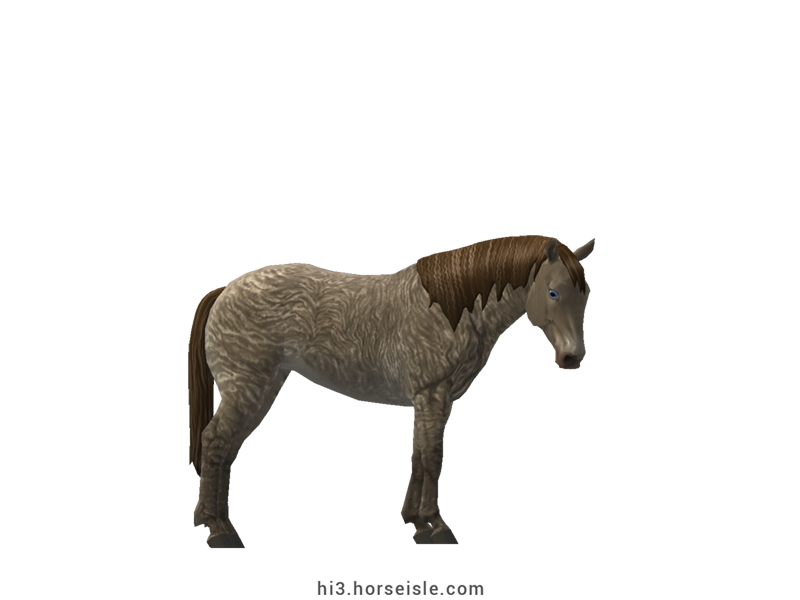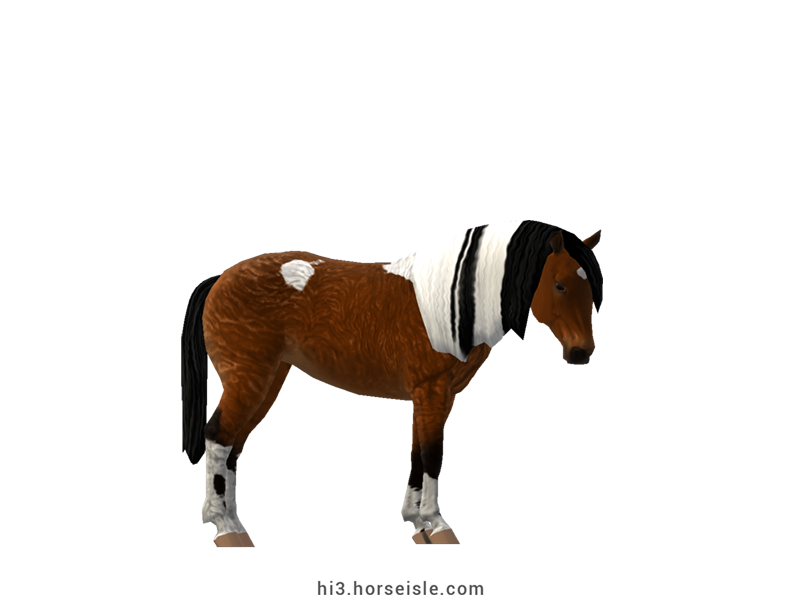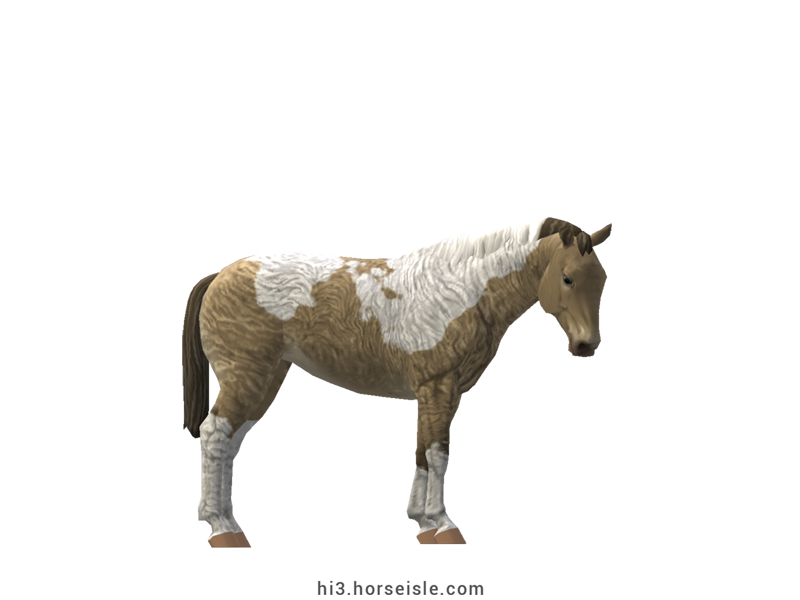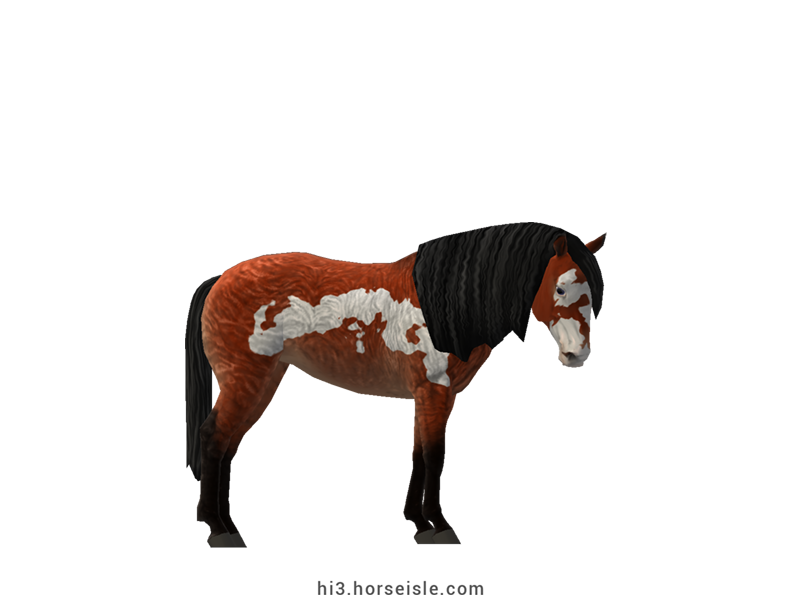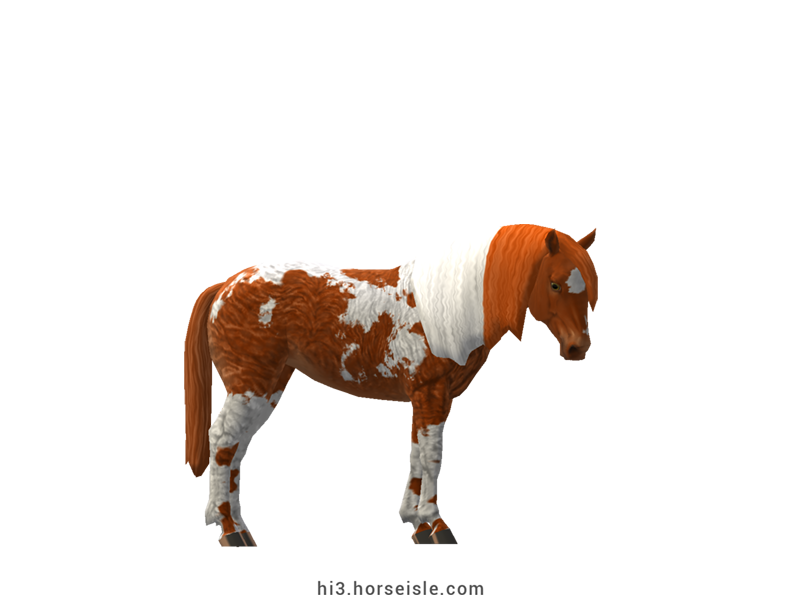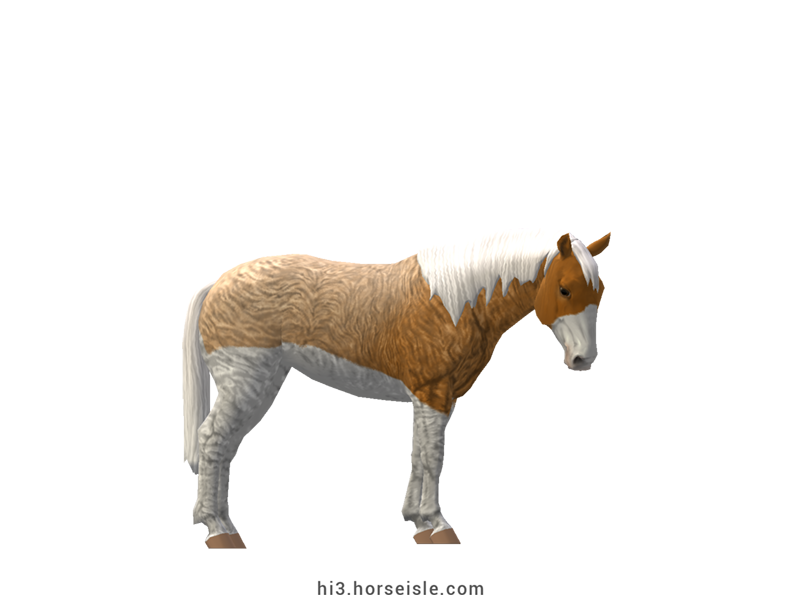Our Massive Real World Equine Reference!
[ INDEX ] Equine Type: Horse Breed: American Bashkir Curly [ PREV ] [ NEXT ]
American? Yes. Bashkir? Not so much:
The American Bashkir Curly was named after another curly breed: the Bashkir horse that is found in Russia. At the time, it was believed that the two are genetically related. However, this theory was disproven, and today it is known that the American Bashkir Curly is unrelated to the Bashkir horse.
So where did the American Bashir Curly come from?
All American Bashir Curlies descend from American and Spanish mustangs. But in the case of most of them, their story began when a group of curly mustangs was spotted in 1989 Nevada by one Peter Damele and his father.
These curly horses attracted the attention of the Dameles, especially after the horrendous winter of 1932. Out of the herd of mustangs, only the curly individuals survived, and that prompted the Dameles to start breeding these curly horses.
Copper D:
Twenty years later, in 1952, another devastating winter hit their farm hard, killing all of their straight-haired stallions. The only stallion left alive was a chestnut curly one named Copper D.
Copper D became the foundation sire of the curly herd of the Dameles, who focused on breeding curly horses. They improved their horses by crossing them with other American breeds such as Morgan, American Saddlebred, and Quarter Horse, while also breeding for their curly coats.
The American Bashkir Curly:
Over the next decades, American curly horses gained more and more attention from breeders. In 1971, the American Bashkir Curly Registry was established to protect and promote this emerging curly breed, as well as to protect curly American Mustangs.
Today, American Bashkir Curlies serve as all-around horses for various disciplines.
Famous bloodlines:
Most of the American Bashkir Curlies that exist today can be traced back to the herd of curly horses bred by the Dameles. That said, there are other lines of curly horses that can be found in the American Bashkir Curly as well.
One example of such a line is the Fredell line, which presents a conformation similar to that of a Quarter Horse. Another line is the Curly Jim line, which is named after its foundation sire who was a Missouri Fox Trotter, and who passed its ambling gaits to its offspring. Horses of this line are often gaited, and often serve as trekking horses.
Registrations & Studbook:
It is important to mention that there is another registry for curly horses in North America: the North American Curly Horse Registry, which was founded in the year 2000.
Unlike the American Bashkir Curly registry which has a closed studbook and strict breeding rules, the North American Curly Horse registry is for any curly horse in North America, even if they come from an unknown lineage. Therefore, while every American Bashkir Curly is also a North American Curly Horse, not every North American Curly Horse is an American Bashkir Curly.
In Horse Isle, the American Bashkir Curly has a closed studbook as well, meaning that crossbreeding is not allowed.
Curliness & breeding notes:
Since the curliness in the American Bashkir Curly is a dominant trait, crossing heterozygous curly horses might result in a straight-haired foal. These foals are eligible for registration in the straight division, and are allowed to breed only with curly horses.
Therefore, in Horse Isle, these straight-haired foals cannot be crossed with each other, but only with curly American Bashkir Curlies (see the 'American Bashkir Curly - Straight Division').
Conformation:
American Bashkir Curlies have a head with a straight profile, a broad forehead, and small-to-medium ears. The neck is of medium length and has a broad base. The withers are medium, the back is short back, and the croup is almost horizontal. The girth is deep at the front but curves sharply toward the flank. The hooves are round, and the fetlocks often have light feathering.
Performance metrics:
The following are the: range, average, (SD), and MOE of performance metrics of ordered American Bashkir Curlies in Horse Isle (not bred ones). In rare cases,
Speed: 14.4-16.2, 15.4 (0.3), 0.06.
Sprint: 56-72, 63 (3), 0.63.
Accel: 1.06-1.29, 1.18 (0.05), 0.01.
Decel: 0.97-1.13, 1.04 (0.03), 0.01.
Jump: 4.98-5.29, 5.11 (0.06), 0.01.
Pull: 2.21-3.19, 2.74 (0.19), 0.04.
Turning: 57.76-74.55, 66.29 (3.10), 0.61.
Reverse: 2.6-3.3, 3.0 (0.2), 0.03.
Stamina: 50.73-57.14, 54.10 (1.30), 0.26.
Reaction: 0.77-0.86, 0.81 (0.02), 0.00.
Coats & Height:
Colors & patterns: all colors and patterns except for mushroom, dominant black, and manchado.
Height: 13.3hh to 16hh.
[ INDEX ] [ PREV ] [ NEXT ]

